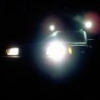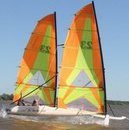Leaderboard
Popular Content
Showing content with the highest reputation on 01/12/19 in all areas
-
I've done 3 joints in the last year or so. One on an '04 Outback, and the other a '00 Outback. Process should be the same for basically all Subarus. We've tried used ones here, most of them have worn joints...not worth the install time IMHO.Dorman makes an aftermarket shaft, same part number for '96-'04 Outback AT. I fished a donor shaft out of the scrap bin here at work with bad joints that came from an '07 4EAT Outback. I've measured it, and held it up under my car, and it looks like it should work, at least temporarily (front half was hardest to measure, looks like it might be a hair short, but I'm not worried about the slip yoke having a little less engagement for street use for a week).Rockford offers joints specifically to replace the staked in applications. Here's their application list for the 430-10 part (the Justy is the only Subaru found elsewhere in their list).http://www.rockforddriveline.com/media/documents/Vehicle_Fitment_430-10.pdfYou may notice it lists Legacy/Outback 1990-2009.Using parts interchange listings, and trying other vehicles on that list, I came up with a few other part numbers. Napa lists a UJ10430, although there was no availability. Autozone lists a 2-0430DL, of which they had 4 in their Hub store across town. I now have 2 of those sitting on my desk (they are greasable, btw). 1. The joint before I started, you can see some of the 8 little "stakes" being deformations in the outer yoke holding the caps in. 20180827_192114 by Numbchux, on Flickr I've seen 2 ways to do staked in joints (generally, not specifically Subaru), one is to grind the stakes out, and the other is to just use a press to push through them. In my experimenting on other shafts, it takes an enormous amount of force (easily the most I've ever done on my little 12 ton HF press), so I opted to grind first. High speed metal cutting bit on the dremel does a pretty good work down in the corners. 20180827_192401 by Numbchux, on Flickr While I had it out, I used the dremel to make a few light marks on the yoke and the shaft itself to ensure the orientation when it came time to reassemble. 20180827_192552 by Numbchux, on Flickr 2. Then over to the press, make sure to support the other end of the shaft pretty well. 20180827_192748 by Numbchux, on Flickr 3. Once it's pressed off to one side, the stakes become really clear (some of these are ground down, some are un-touched). 20180827_192926 by Numbchux, on Flickr 4. Flip it over and press it back all the way through to flatten those stakes. Then lay it with the opposite yokes supported (a vice works best for this), and pound on the yoke so those cups can be pushed out beyond the ears. Don't pound on the thin part at the top of the ears, and don't pound on the shaft tubing itself. 20180827_193255 by Numbchux, on Flickr 5. Flip over and repeat the other way until those cups are pushed as far out of the yoke as possible. It should get to the point where the cross of the ujoint can be removed from the yoke (if those cups are damaged, you might need to sneak a punch passed the cross to push the cup out further, just make sure not to damage the yoke). 20180827_193408 by Numbchux, on Flickr 6. Then pound the cups out the rest of the way: 20180827_193515 by Numbchux, on Flickr Rotate the shaft 90*, and repeat steps 1-6 to remove the other 2 caps, and remove the joint completely. 7. Now switch to a softer dremel bit (wire wheel or sanding drum work well) to clean up the inside of the yoke, you want to smooth everything out without taking off really any material. You'll also want to run a flat file across the inner surface of those ears, as the new joints will be held in place by snaprings against this surface. 20180827_195537 by Numbchux, on Flickr 8. Now to start preparing the new joint. The four cups need to be removed from the center cross, inside those cups are needle bearings which have to stay in place, and the only thing holding them there is grease. They *should* be pregreased with assembly lube for this purpose, but I don't trust it, so I hold the caps in place by hand and gently pump some fresh grease through them: 20180827_194557 by Numbchux, on Flickr 9. Then pull the caps off. You'll notice I removed the grease zerk from the one cap to protect it from damage, this is optional, but IMHO a good idea. 20180827_194833 by Numbchux, on Flickr 10. Put the cross in the middle of the yoke, and one of the caps in from the outside. You want to hold the cross inside the cap as tight as possible as you press on it to help keep those needle bearings in place. 20180827_194903 by Numbchux, on Flickr 11. Then press it in well past it's final resting place. This simplifies putting on that snapring, and aligning the opposing cup. 20180827_201328 by Numbchux, on Flickr 12. Put the snapring on the one cup, then put the opposite cup from the other side, and again slide the cross into the new cup as you press it in. This is a bit tricky, as you have to get it pressed in far enough to get the second snapring on, but you don't want to put too much pressure on the bearings to damage them (although, the cross should bottom out in the cups before the needle bearings bear the brunt of the weight) Back to step 10 to finish the other half of the joint, taking care to reassemble in the same orientation that you started with. Install the grease zerk (if you removed it), and grease. 20180827_203215 by Numbchux, on Flickr Now flip the shaft and do it all again at the other end. Install in the car, and enjoy!4 points
-
As you've all illustrated, our work exists on a continuum from the "fun and games, keeping my own stuff running and staying stimulated by learning new things", through work for an employer and/or customer, to mission-critical/man-rated, where mistakes have the most serious consequences. As fate has had it, I've never been involved in the latter, and some of the very best programmers I've ever worked with have been categorical about not wanting that kind of responsibility. My career has been in the middle, and often as a contractor, where those mistakes sometimes came out of my own pocket. But back at the lighter end of the scale, here's another learning-on-the-fly boner move: For the longest time I had a persistent - and increasingly severe - drivetrain vibration in my old beater '91 Dakota 4x4. At one point I was so frustrated I was determined to just start disconnecting things until something changed. So off came the front driveshaft. No change. Then one front drive axle - I pulled it out and took it for a spin. No change. Then the other drive axle. I headed out our driveway and about a quarter mile down the access road to the secondary highway (we're out in the country). As I pulled out onto the highway, both front bearings (without the axles supporting the load) gave out, planting the front end on the pavement with the wheels splayed out like in a cartoon, or a newborn colt that can't quite stand up yet. I wish I'd had a camera - as I stood back and looked at it I just couldn't stop laughing. Then I trudged home, got the jacks and tools, and sorta wedged it all back together again well enough to limp back to the garage. To cap it, while I was fetching the tools, my girls' school bus driver passed by the poor thing, so the story got around. As my former business partner and I say: We know it's built right because we did it six times.2 points
-
A few points: First, if you're trying to repair wiring faults, "twisting together" wires doesn't cut it. Either solder them or use a crimp connector (butt splice). Twisting will not give you the reliability you need. Second, Haynes manuals, while usually generally useful, do not contain model year specifics accurate enough for debugging electrical problems. They just don't, and you shouldn't try to do this based on their drawings, because you'll be wasting your time chasing ghosts. Somewhere, somehow, you need to find the exact drawings for your car. (This is a problem across the board, not just with Haynes' Subaru manuals.) Third, assuming your engine uses the same type of sensors as mine (which start at '95), they are passive devices that are unpowered - that's why they only have two wires. They're called "variable reluctance" sensors, and you can think of them as sort of like the volume control on an older stereo (which are variable resistors - potentiometers - that don't need to be "powered"). (A lot of newer audio equipment uses more complicated rotary controls like optical shaft encoders that are "active" devices and do need to be powered, but that's not what we're talking about here.) The upshot is that if you want to see whether the sensor is producing the pulses it's supposed to, you really have to put an oscilloscope on it.1 point
-
What Bennie said, it helps to paint a spline and a matching location on the housing for reference. Makes it much easier to see if it has moved. Cheers, Al On a side note, while you have access to the flywheel, go and get some reflective tape. Cut 4 thin strips, 2 about 5 mm long and another 2 at about 10 mm long. I run Ruby at 12 degrees BTDC, I've placed the two long ones at 0 and 12 degrees BTDC and the other two shorter ones on 10 and 14 degrees BTDC. The timing light picks these locators up beautifully. I've used paint before and that works well but the reflective tape makes it far easier to see.1 point
-
That's a darn good question. FWIW, I have about 42,000 miles on my 2015 Crosstrek and no such problem ... so far at least. Is there any known production date range that's affected by this?1 point
-
when I had to do something similar, I used a hydraulic jack to lift the wheel/hub/w'ever, to take 99% of the weight off that jack stand. be careful regardless of how you do it!1 point
-
stellar vehicles. replace all the timing components and water pump, that lower idler in particular fails all the time. 97 is first year for interference engine so best to replace all the timing bits at once.1 point





